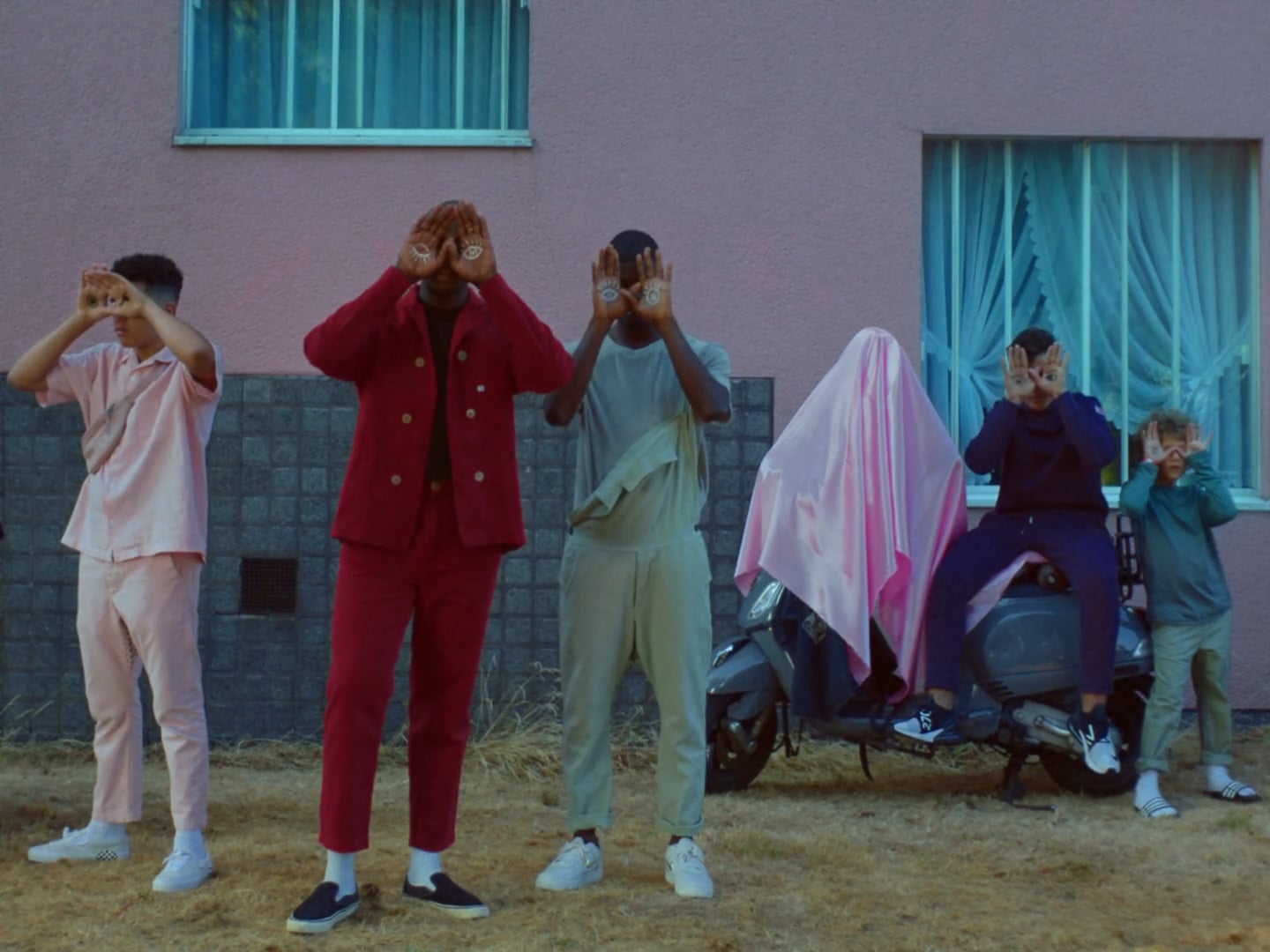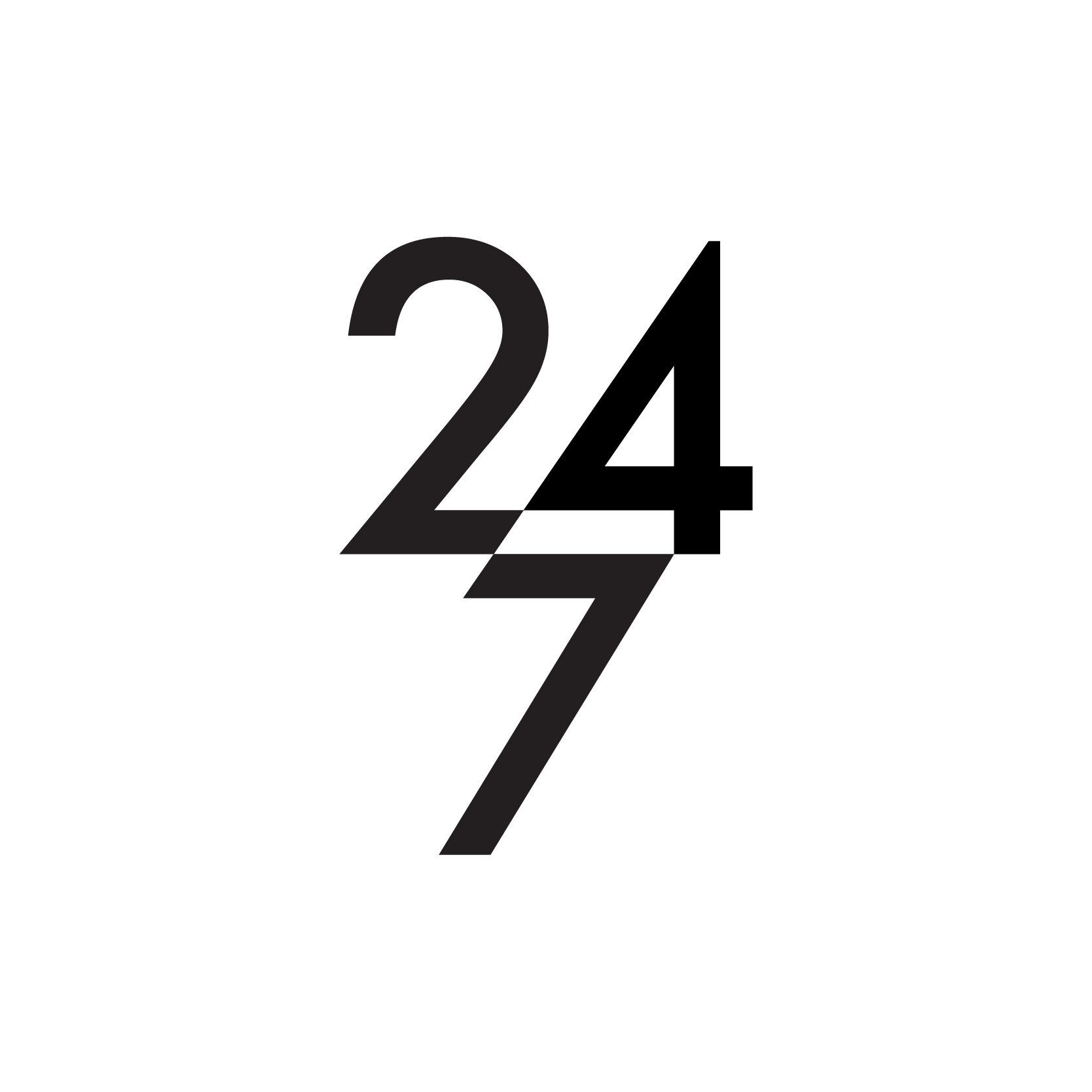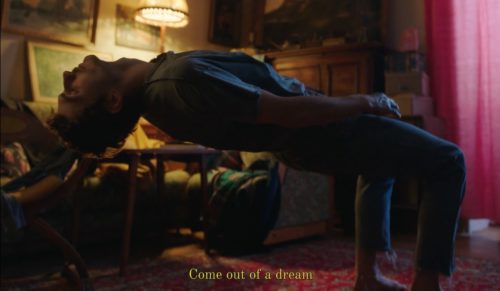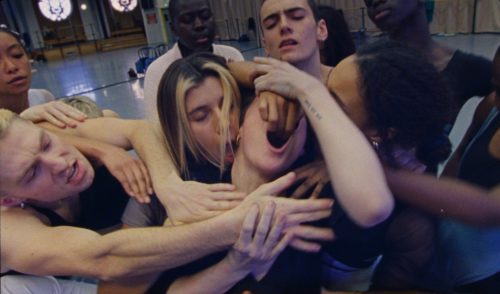Let’s start at the beginning…
My first film, which I made about three years ago, was for a lingerie brand. I made it because I was so fed up with seeing women with a lot of makeup on, just pulling up stockings, getting ready for a big night, not even for themselves but to meet a date.
I wanted to make something different. So I went with a friend to Paris and I shot a campaign for a brand there. You don’t even see much underwear in the shoot because I was like, “Wouldn’t it be smarter if everyone can just assume you’re wearing underwear. Wouldn’t it be nice for a lingerie company to not feature lingerie but to sell the character? Sell a girl who is eating fries and kebab, drinking chocolate milk, whatever she’s doing in Paris.”
And, actually, that film really hit it off. Within a few weeks I had like a million views on my Facebook and I didn’t even have a video account then. So that was quite funny how that happened.
How did you get into film making?
I was studying fashion and branding in the Netherlands at The Fashion Institute. And in the third year there was a minor called Visual Culture and you had to do 10 weeks of photography and 10 weeks of film. And it was my third year and I was like, “Oh shit. I’ve made the wrong choice. I should have gone to film academy.”
I did finish my studies, although instead of going to film academy I bought a simple camera and taught myself how to edit. I felt like if I knew how to edit, I would know more about the process: how does the pace work with your imagery, what do you need to build something with, music, sound design, titles everything. I thought that if I know these basics, and combined them with my branding and concepting skills, I could save myself time and money by not going to film school. The first clip that I felt was good enough to upload was the lingerie film that I just mentioned. And that’s how it started.
Was that a real brand?
It was a real brand but it was a hypothetical project. But the film was received so well that they actually used it. There was also no money. It was just me. But they did use it in the end so you could call it a commercial, sort of.
Did you write the narrative as well?
Yes, there was a male voice over talking about the girl in a very natural way. He was summing up all the stuff that he liked about her but also he was giving attention to all her little flaws and quirks. It’s about a guy falling in love. I got a lot of people asking me, “Okay do you have her number or contact?” Like, “Is this girl real? Is she really called Bo? I’m in love so could you help me?” And I was like, “Okay. I think it’s working. I think the script is doing what it’s supposed to do.”
You see that the film is not professionally shot. It doesn’t feel like a home video but it feels more natural, let’s say. But I think that even benefited the story because it looked very authentic.
Your latest film, Strange But True for Wrangler, is really expressive of your film language. Multi-layered intrigue, probably deeply researched, quirky narrative, great framing. Is this true? Was the creative process straight forward?
That is definitely true. I wanted to communicate through both language and body language. I wanted to create something silent, but also playful by just layering bits and pieces together like an indie filmtrailer. There’s deliberately no start or ending.
I love random facts, and I’ve used facts that are strange but true, so I decided that that would actually be the perfect title for it. And that makes the film itself also a little strange, but also true. Who knew that sunsets on Mars are blue? Luckily Wrangler gave me all the freedom to experiment with the models during the shoot. I had only written down the facts that I wanted to be featured, I had an idea on what I wanted to portray, but this film has more improvising than my other films.
Do you work in a strict routine? Are you disciplined?
I would say I’m quite disciplined. If I set my mind to something I want to finish it. Maybe it’s more … what’s the word … a perfectionist. So, for example, when I make a treatment I want to write it myself. I want to do proper research. But a routine? I think that sort of depends on what the project needs. I can work from a lot of different places. So, in that sense, the routine can change.
Now that your projects are much bigger I’m assuming you collaborate with crew more?
Yeah definitely. I felt like I had to know everything in the beginning, but I love working with crews and collaborating with a good DP and an editor because the work becomes more rich. Everyone has their own specialty so I’m totally up for acknowledging everyone’s specialty. But I’m happy that I do understand the editing process as well as the writing.
Do you enjoy the research part of the process?
Yeah. I have a document on my computer which is part of my brain. So every time I’m excited about a topic, a colour, a person, a word or something I make one slide, one image, one title and one tweet length explanation. So I can just click through it. When I have to make something quickly, this is my my inspiration folder.
So you must have dived into your digital scrapbook quite a bit for your Museum Night film… please tell us about that.
Once a year, Amsterdam sees more than 50 museums open their doors after-hours as part of Museum Night. They host a special exhibition, a concert or party amongst the artwork. The goal is to make museums more accessible, to broaden people’s perception about what these institutions are and how to engage with them. It’s an inclusive initiative, and I was excited to work with them on their first ever film campaign to showcase this inclusivity.
It was a really open book, we actually came with the suggestion to make a film in the first case. I wrote a short narrative about how “looking” actually works. I wanted to pick a broad theme that every person could relate to if they visit museums. All the museums are so incredibly different, that if it would be specific, 90% of them would feel left out. So I thought… we all use our senses, of which eyes are key. But no one knows the process of what looking actually is.
It became the narrative theme, encouraging the audience to look at things differently, or to teach them something they didn’t know before. In a way, this concept is quite neurological.
The next step was to do visual research. Luckily, the museums were the best source of inspiration. The art and stories within these amazing spaces worked as a compass in developing the overall style, tone and direction of the film. Combined with an amazing Amsterdam cast, the picture was complete.
Do you relish working with open briefs?
It can of course be extremely freeing to be involved in the concept-phase, and it’s something I tend to enjoy. It challenges you in a different way, but I like a balance – to push to work in different ways and apply my skills to the task at hand. The role of the director is evolving, which is really great and sometimes challenging because there’s a whole other level of creativity and strategy expected from your end. You really have to divide your brain into scheduling like, “Okay. Now I’m going to brainstorm this. Or try and research that.” It’s quite hard sometimes.
As I’ve already mentioned, I love diving into the details and can get really obsessed in the research phase. So the combination of developing a creative idea, a concept and mapping out the visual layer is a dreamy combination. But, nevertheless, it’s a time-consuming process. And as we all know, the commercial world is rather fast-paced. So, it pushes me to always try to work in new ways. Utilise my ‘research library’ and surround myself with people to collaborate with whose expertise will bring the project at hand to the next level.
I can have a lot of ideas but … I feel that I have to justify it. Like “this concept feels right because I can work it out visually like this, location wise like that, narrative wise like this.” So you can test it like a formula almost. If it feels too one-sided or if only the narrative works but it doesn’t work visually, if it doesn’t connect to the other parts, then the idea’s not good enough. To me, anyways.
Tell us about the I-D / William Morris, Loewe shoot in London and what was the original brief?
The initial brief was that Loewe wanted to feature their latest capsule collection, an homage to the work of legendary British textile designer, artist, and writer William Morris. They wanted a film that would echo the spirit of this collection, ‘Morris Meets Punk’. The brief was very open. And they gave me a lot of freedom. I think, one of the last sentences in the brief was: “create your own William Morris world which could exist today.”
My approach was to craft a film that payed tribute to Morris. I researched everything about him – his print, furniture, textile design, activist and writing work… During this process I discovered one of his texts, a poem called ‘Love is Enough’. It became the title of the film, and the poem really glued everything together as I used it as a narrative and then visual reference. Contemporary London poet, spoken word artist and DJ James Massiah was brought on-board to voice the poem. The whimsical aesthetic setting adds an extra poetic layer, and I used a combination of visuals highlighting the collection and its inspirations.
Do you think the narratives are changing now that more women are directing fashion and beauty ads?
Yes, definitely. But it also has to do with fashion films getting more attention overall. You see many non-fashion directors who are stepping into the fashion world, and really good DPs are now also shooting fashion campaigns. So with them coming in, fashion brands can create this whole culture. It’s not even about the clothing, they’re selling a vibe.
As a commercial director, being a positive voice towards re-examining the issues of female representation in our industry, at all levels, is a prerequisite. I am an ambassador for Free the Bid in The Netherlands, and through that and my storytelling in film I hope to challenge the narrowness of the conversation when the issue is, in fact, so broad.
LINKS:


























